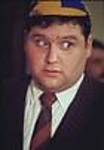I am currently building a 1/48th scale Hog Islander and have hit a dead end with regard to the hull plating on my Hog. In the photos I have of a Hog the hull appears smooth but none are close up pics. I am a newbie so I dn't necessarily know the correct terms but here it goes.
Does British shipyard terminology differ radically from American shipyard terminology? For instance the joint between the side edge of one hull plate and the side edge of the adjacent hull plate in the same plane is called a butt in British shipyard terms. Is it the same in American? The joint from the bottom edge of one hull plate to the top edge of the hull plate immediately below is called the seam. Same in American?
Are the butts and seams on a Hogs' hull plates joggled?
Is there a particular name given to the In and OUT strake method of hull plating ( like the Titanics hull)? and were Hogs done this way?
ANY help is appreciated
Cheers from the Heart of North America
Will
You are viewing the archived version of the site.
Go to modelshipwrights.com for the current dynamic site!
Go to modelshipwrights.com for the current dynamic site!
Research & Resources
Discuss on research, history, and issues dealing with reference materials.
Discuss on research, history, and issues dealing with reference materials.
Hosted by Jim Starkweather
Hull Plating Hog Islander
MTHopper

Joined: January 05, 2008
KitMaker: 56 posts
Model Shipwrights: 8 posts

Posted: Saturday, May 26, 2012 - 07:08 AM UTC

CaptSonghouse

Joined: August 08, 2008
KitMaker: 1,274 posts
Model Shipwrights: 1,236 posts

Posted: Thursday, May 31, 2012 - 08:36 AM UTC
Hi Will!
Looking at a photo of the hospital ship Samaritan, a Hog Island design, the hull used lap plating, with the overlaps progressing from bottom to top, aft to forward, meaning that the uppermost plate at the end of bow is the topmost plate. This also means that the ledges of each superimposed plate faced aft and downward.
--Karl
Looking at a photo of the hospital ship Samaritan, a Hog Island design, the hull used lap plating, with the overlaps progressing from bottom to top, aft to forward, meaning that the uppermost plate at the end of bow is the topmost plate. This also means that the ledges of each superimposed plate faced aft and downward.
--Karl
MTHopper

Joined: January 05, 2008
KitMaker: 56 posts
Model Shipwrights: 8 posts

Posted: Tuesday, June 05, 2012 - 09:47 AM UTC
Thanks Karl. After a two year search I have no resulta at all. I agree with you.
Given that it was wartime and considering cost and the fact that welded hulls were still too new ( plus lack of a large labour firce skilled to weld hulls at that time). Plus they were trying to produce them as quickly as possible I've settled on Lap strake plated hulls starting at the garboard strake and plating up to the bow top.
Again thanks.
Cheers
Will
Given that it was wartime and considering cost and the fact that welded hulls were still too new ( plus lack of a large labour firce skilled to weld hulls at that time). Plus they were trying to produce them as quickly as possible I've settled on Lap strake plated hulls starting at the garboard strake and plating up to the bow top.
Again thanks.
Cheers
Will
 |






